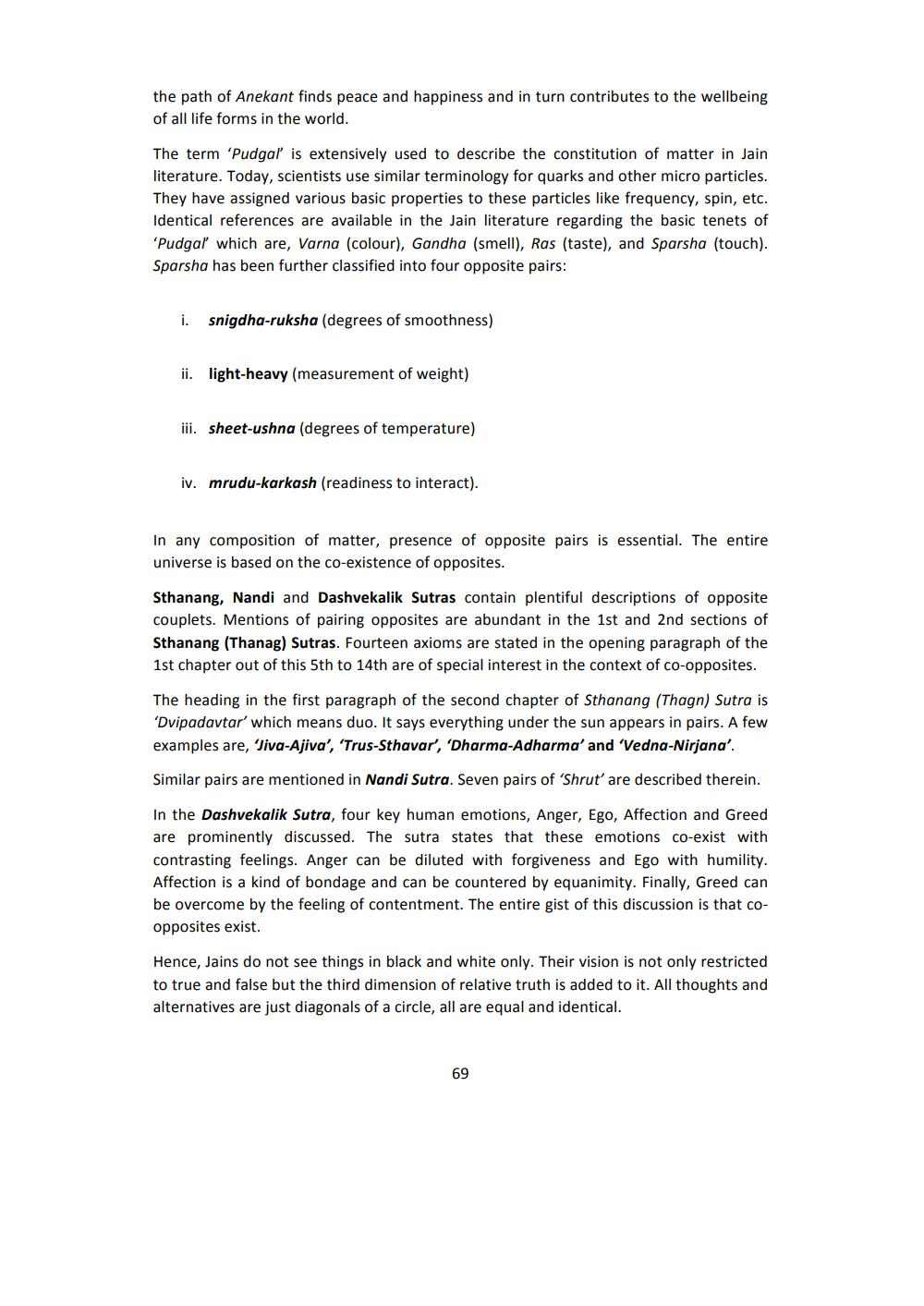________________
the path of Anekant finds peace and happiness and in turn contributes to the wellbeing of all life forms in the world.
The term 'Pudgal' is extensively used to describe the constitution of matter in Jain literature. Today, scientists use similar terminology for quarks and other micro particles. They have assigned various basic properties to these particles like frequency, spin, etc. Identical references are available in the Jain literature regarding the basic tenets of 'Pudgal which are, Varna (colour), Gandha (smell), Ros (taste), and Sparsha (touch). Sparsha has been further classified into four opposite pairs:
snigdha-ruksha (degrees of smoothness)
ii. light-heavy (measurement of weight)
iii. sheet-ushna (degrees of temperature)
iv. mrudu-karkash (readiness to interact).
In any composition of matter, presence of opposite pairs is essential. The entire universe is based on the co-existence of opposites.
Sthanang, Nandi and Dashvekalik Sutras contain plentiful descriptions of opposite couplets. Mentions of pairing opposites are abundant in the 1st and 2nd sections of Sthanang (Thanag) Sutras. Fourteen axioms are stated in the opening paragraph of the 1st chapter out of this 5th to 14th are of special interest in the context of co-opposites.
The heading in the first paragraph of the second chapter of Sthanang (Thagn) Sutra is 'Dvipadavtar' which means duo. It says everything under the sun appears in pairs. A few examples are, Jiva-Ajiva', 'Trus-Sthavar', 'Dharma-Adharma' and 'Vedna-Nirjana'.
Similar pairs are mentioned in Nandi Sutra. Seven pairs of 'Shrut' are described therein.
In the Dashvekalik Sutra, four key human emotions, Anger, Ego, Affection and Greed are prominently discussed. The sutra states that these emotions co-exist with contrasting feelings. Anger can be diluted with forgiveness and Ego with humility. Affection is a kind of bondage and can be countered by equanimity. Finally, Greed can be overcome by the feeling of contentment. The entire gist of this discussion is that coopposites exist.
Hence, Jains do not see things in black and white only. Their vision is not only restricted to true and false but the third dimension of relative truth is added to it. All thoughts and alternatives are just diagonals of a circle, all are equal and identical.
69




